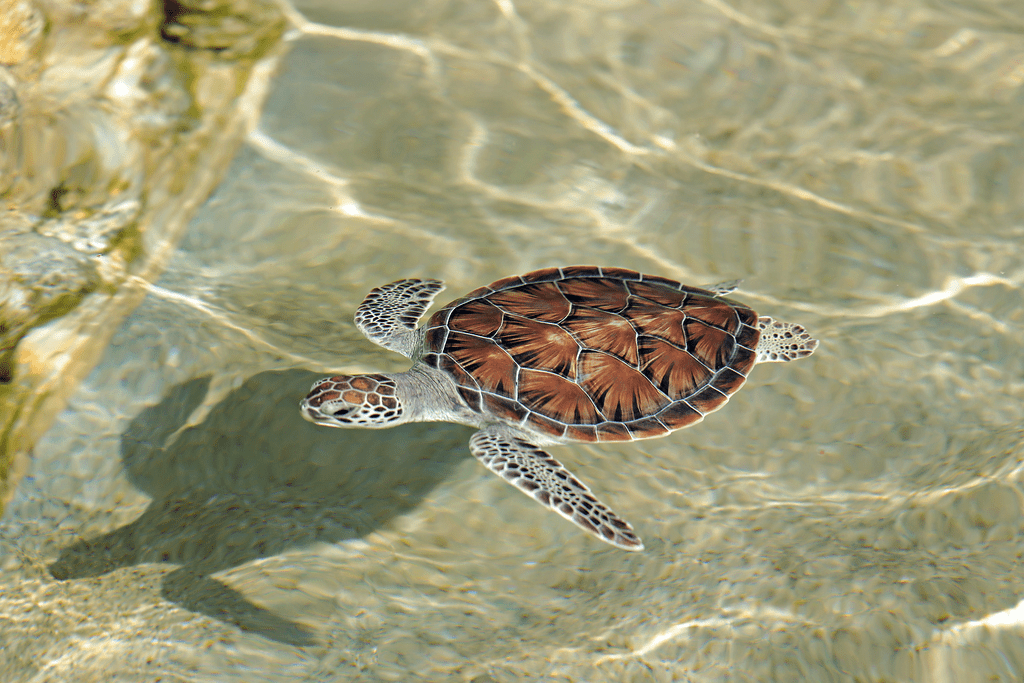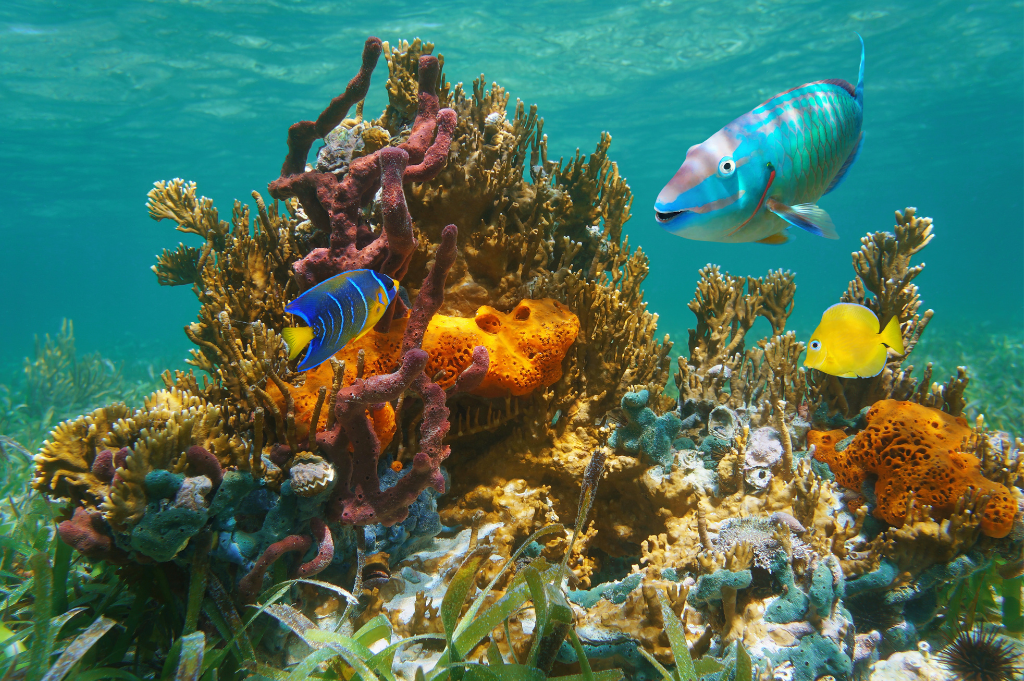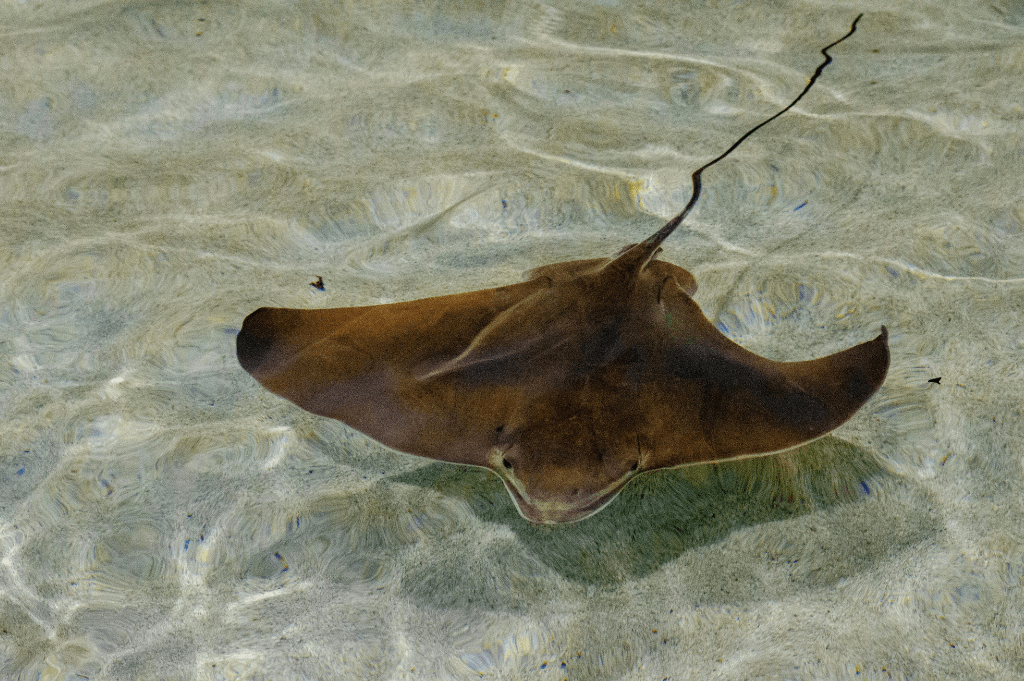
A Comprehensive Guide to a Career in Aquatic Animal Veterinary Medicine
Explore your pathway to a meaningful and impactful career as an aquatic animal veterinarian.
The world’s oceans are teeming with incredible creatures, from graceful sea turtles to majestic stingrays and vibrant schools of fish. Yet, many of these rare aquatic animals face growing threats, making the role of aquatic animal veterinarians more vital than ever.
If you’re passionate about marine life and preserving the health of our planet’s aquatic ecosystems, this guide will walk you through the steps to a fulfilling career in aquatic animal veterinary medicine.
Why Choose a Career in Aquatic Animal Veterinary Medicine?
The field of aquatic animal veterinary medicine is just one of the many specializations available to veterinarians, with each offering its own distinctive blend of challenges and rewards. As a marine animal veterinarian, you’ll address the health needs of species that inhabit oceans, rivers and lakes, contributing to the conservation of endangered aquatic animals and the overall health of marine ecosystems.
Aquatic veterinarians are essential in diagnosing and treating illnesses, performing surgeries and developing rehabilitation plans for injured or sick marine creatures. A career in aquatic animal veterinary medicine offers the chance to work with a wide range of species, from dolphins to exotic fish, while also contributing to the health of our planet’s ecosystems. As a specialist in this field, you’ll address unique challenges like pollution, climate change and the care of endangered aquatic animals.
This career path is uniquely fulfilling for those who love the ocean and are driven by a sense of purpose to protect its inhabitants. Whether you’re working in a wildlife rehabilitation center, collaborating on conservation projects or pioneering medical advancements for marine life, there’s always a new challenge to tackle.
Education and Skills Required for Working with Rare and Large Aquatic Animals
Pursuing a career in aquatic veterinary medicine requires a solid educational foundation and a specific skill set. Typically, the journey begins with a bachelor’s degree in biology, marine biology, animal science or a related field, followed by a Doctor of Veterinary Medicine (DVM) degree from an accredited institution, which is the key to unlocking most veterinary careers.
Some DVM programs, like the one offered by St. Matthew’s University, offer early hands-on experience with aquatic animals and electives in aquatic animal medicine, providing targeted knowledge that is beneficial for this career path.
Starting early in your journey is also important. Engaging in internships or volunteer opportunities at aquariums, marine rehabilitation centers or research facilities can provide hands-on experience with large aquatic animals for secondary and undergraduate students. Personal skills in swimming, scuba diving and boat handling are also useful to develop as they may be necessary for some roles, which require practitioners to work directly in aquatic environments.
Strong analytical and problem-solving abilities are important too, as they can often be crucial for diagnosing and treating a wide range of species, each with unique anatomies and health concerns. Excellent soft skills, such as empathy and communication abilities, can sometimes be overlooked but are equally valuable, as aquatic veterinarians often collaborate with marine biologists, conservationists and other professionals dedicated to ocean wildlife conservation.
Day-to-Day Responsibilities of an Aquatic Animal Veterinarian
The responsibilities of an aquatic animal veterinarian are as diverse as the creatures they treat. On any given day, you might:
- Diagnose and treat illnesses or injuries in rare aquatic animals.
- Assist in marine life rehabilitation efforts for animals affected by pollution or accidents.
- Conduct research to develop new treatment protocols for large aquatic animals.
- Collaborate with conservationists on initiatives to protect endangered aquatic animals.
- Educate the public or train other professionals in marine animal care.
Every task contributes to the overarching goal of improving the health and sustainability of ocean wildlife.



Tools and Techniques for Treating Rare and Large Aquatic Animals
Aquatic animal veterinarians rely on specialized tools and techniques to address the unique challenges of treating marine life. These include:
- Portable diagnostic equipment, such as ultrasound machines designed for underwater use.
- Anesthesia delivery systems tailored for aquatic environments.
- Innovative surgical techniques for animals with unique anatomies, like sea turtles or stingrays.
- Water quality monitoring tools to ensure healthy living conditions for aquatic patients.
Mastering these tools requires dedication and a deep understanding of the marine environment.
Common Rare Aquatic Animals Treated at the School
Studying veterinary medicine in the Caribbean offers exciting opportunities to work with fascinating species in their natural habitat. The region’s rich biodiversity provides students with hands-on experience with creatures that are not only iconic but often endangered. At St. Matthew’s University School of Veterinary Medicine (SMUSVM), the animals you’ll be treating first-hand include sea turtles, stingrays and endangered fish species.
Sea Turtles
Sea turtles are among the most instantly recognizable marine species, yet they face numerous threats, including habitat destruction and bycatch issues in fishing nets. Aquatic veterinarians often treat these gentle and beautiful creatures, addressing issues ranging from shell injuries to respiratory infections.
Early hands-on experience with sea turtles enhances understanding of their unique physiology and the conservation efforts required to protect them.
Stingrays
Stingrays, with their distinctive flat bodies and long tails, are common in Caribbean waters. They face threats from habitat degradation and fishing activities. Veterinary students may assist in procedures such as wound care, parasite removal and health assessments, gaining insight into the care required for these fascinating creatures.
Endangered Fish Species
The Caribbean is home to several endangered fish species, including certain types of groupers and parrotfish. Aquatic veterinarians participate in conservation programs that involve health monitoring, breeding efforts and habitat restoration projects aimed at preserving these vital members of the marine ecosystem.
Career Opportunities for Veterinary Graduates
Veterinary school graduates who go on to specialize in aquatic veterinary medicine have a wide array of career opportunities available to them. Potential employers include aquariums, marine parks, research institutions, conservation organizations and governmental agencies focused on wildlife and environmental protection. Roles may involve clinical care, research, policy development or education, with each contributing to the field of marine life rehabilitation and conservation.
Some aquatic veterinarians choose to focus on even more specific areas, such as aquaculture, ensuring the health of farmed fish populations, or wildlife rehabilitation, working to rescue and release injured marine animals. The growing awareness of environmental issues and the importance of preserving aquatic ecosystems continues to expand the demand for professionals in this field.
Steps to Start Your Journey in Aquatic Animal Medicine
- Educational Foundation: Begin with a bachelor’s degree in a relevant field such as biology, marine biology or animal science.
- Practical Experience: Gain hands-on experience through internships or volunteering at aquariums, marine rescue centers or research facilities. Practical exposure to large aquatic animals and rare aquatic species is invaluable for building the skills needed in this field.
- DVM Degree: Enroll in a veterinary school that offers a Doctor of Veterinary Medicine (DVM) degree, ideally one with opportunities to experience and focus on aquatic animal medicine.
- Licensure and Certification: After earning your DVM degree, pass the necessary licensing exams to practice veterinary medicine. Pursuing additional certification in aquatic animal health can further enhance your qualifications.
- Lifelong Learning: Stay updated on the latest advancements in aquatic veterinary medicine by attending workshops, conferences and continuing education programs. Regularly networking with professionals in the field can also open doors to new career opportunities.
How St. Matthew’s University Prepares Students for a Career in Aquatic Veterinary Medicine
At St. Matthew’s University School of Veterinary Medicine (SMUSVM), the Doctor of Veterinary Medicine (DVM) program is designed to provide students with the knowledge, skills and hands-on experience needed to excel in veterinary medicine. Located on beautiful Grand Cayman, SMU offers students unique opportunities to study rare aquatic animals in their natural habitat, preparing students for real-world challenges.
Ready to take the plunge into this exciting and impactful field? Find out more about our DVM program.
You can also learn more about SMUSVM and campus life for our DVM students from this testimonial video:
Then, when you’re ready to start your journey in veterinary medicine, you can apply here!
FAQs About Aquatic Veterinarians
An aquatic veterinarian is commonly referred to as a marine animal veterinarian or an aquatic animal veterinarian. These professionals specialize in the health and care of animals that live in aquatic environments, including oceans, rivers and lakes.
Yes, aquatic vets are in demand, particularly as awareness of ocean wildlife conservation and the importance of healthy aquatic ecosystems grows. Their expertise is crucial for addressing challenges like pollution, climate change and the care of endangered aquatic animals.
Securing a job as an aquatic vet can be competitive due to the specialized nature of the field. However, gaining relevant education, certifications and hands-on experience can significantly improve your prospects. Opportunities are expanding with increased focus on marine biology education and conservation efforts.
Becoming an aquatic veterinarian typically requires a total of 7-10 years of education and training. This includes earning a bachelor’s degree, completing a DVM program and possibly undertaking additional certifications or internships to specialize in aquatic veterinary medicine.
Request Information